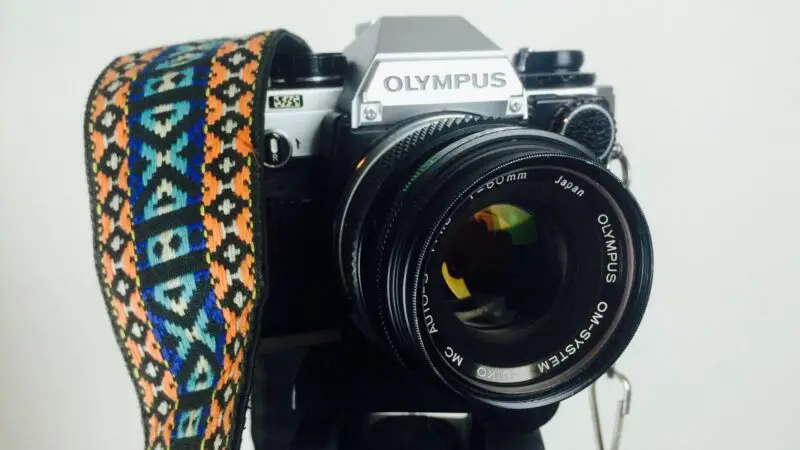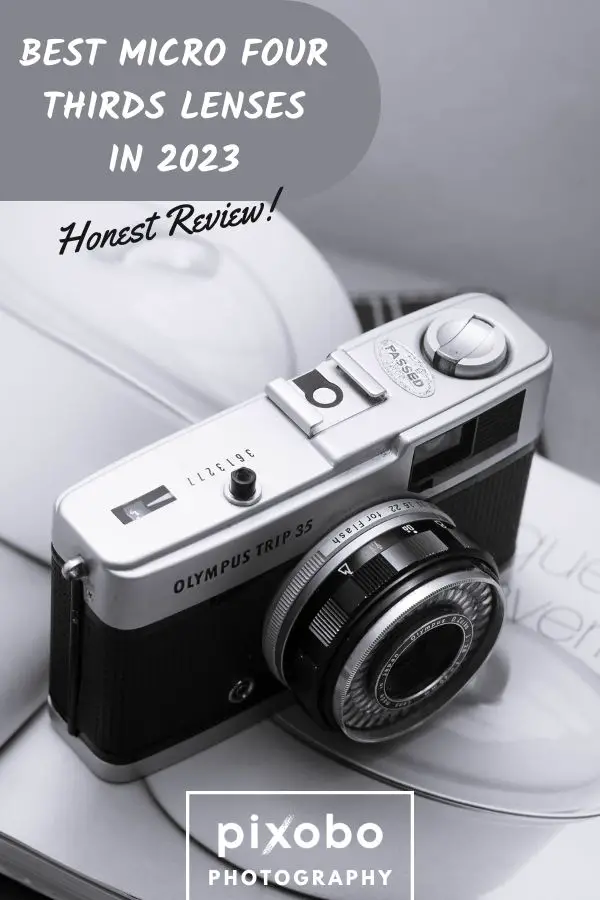In case you don’t know, Micro Four Thirds (MFT) is a camera sensor system developed by Olympus and Panasonic in 2008. Unlike the full-frame and APS-C, the MFT system uses a 4:3 aspect ratio and smaller sensors. It is also being used in mirrorless cameras and replaced the old Four Thirds system for DSLR cameras.
Meanwhile, the digital imaging company OM Digital Solutions acquired the Olympus camera brand in January 2021. Since then, the new products have been branded as OM System. Nevertheless, the existing Olympus products continue to use their original name. With that, here are the best lenses for Olympus MFT mirrorless cameras.
Table of Content
Landscape and Travel Photography

1. Olympus M. Zuiko 7-14mm f/2.8 ED PRO
- 7 14 millimeter(14 28 millimeter 35 millimeter equivalent) lens with splash and dustproof construction. Angle of view 114° 75°
- Closest focusing distance at just under 7. 5 centimeter, maximum image magnification: 0. 12x, focal length: 7 14 millimeter
- Manual focus Clutch Mechanism and l fan button for assignable functions
Announced in May 2015, the Olympus M Zuiko 7-14mm f/2.8 ED PRO is a professional ultra-wide-angle zoom lens for Micro Four Thirds cameras. The widest Micro Four Thirds rectilinear lens with a constant ƒ/2.8 aperture offers an equivalent focal range of 14-28 mm in a 35-mm camera, making it ideal in landscape photography.
The Olympus M Zuiko 7-14mm f/2.814 features 14 elements in 11 groups. This includes three Super ED elements, two HR (high-refractive index) elements, two aspherical ED (extra-low dispersion) elements, one DSA (Dual Super Aspherical) element, one ED element, and one aspherical element. This lens has an f/22 minimum aperture, though.
Offering a minimum focusing distance of 20 cm (7.87 inches) and a 0.12x maximum magnification, this Olympus M-Zuiko lens has a diagonal wide angle of view of 114° to 75°. A fast, precise, and quiet linear stepping motor drives autofocus. ZERO high-performance multi-coatings are applied to its surfaces to reduce flare and ghosting.
Since this Olympus M 4/3 lens has a protruding front element, it has no filter thread. Like most M-Zuiko lenses, this 7-14mm f/2.8 ED PRO lacks image stabilization, which is not a major issue. Weighing only 534 grams (1.17 pounds), this compact Micro Four Thirds lens is truly a superb zoom lens but quite expensive.
2. OM System M. Zuiko Digital ED 12-40mm F2.8 PRO II
- Weather Sealed Design
- Fluorine Coating
- MF Clutch
The OM System M. Zuiko Digital ED 12-40mm F2.8 PRO II is the successor to the Olympus M. Zuiko 12-40mm f/2.8 Pro, released in 2013. Announced in February 2022, this OM System micro 4/3 lens is identical to its predecessor in almost all aspects. It has some major improvements and is under a new brand name.
Like the original 12-40mm f/2.8 Pro, this Pro II version comprises 14 elements in 9 groups. This includes 2 HR lenses, 2 ED lenses, 2 aspherical lenses, 1 DSA lens, 1 HD lens, and 1 aspherical ED lens. Both lenses are driven by a linear stepper motor and have an f/22 minimum aperture, 7 rounded aperture blades, and a 62-mm filter thread.
These two Zuiko 12-40mm f/2.8 lenses allow a minimum focusing distance of 0.2 m (7.87 inches) and a maximum magnification of 0.3x (0.6x at 35mm equivalent). They also have the same dimensions (69.9 x 84mm) and are lightweight at 382 grams (0.84 lb). So basically, OM System retained all the features and looks of the Olympus version.
The Zuiko 12-40mm F2.8 Pro and Pro II also don’t have image stabilization. Yet, the key difference between them is that the latter features more advanced IP53-rated weather sealing instead of the conventional IPX1. It also employs fluorine coating, repels water, oil, and dust. In short, the Pro II is more protected in severe situations.
3. OM SYSTEM 40-150mm f/4 Pro
- Compact Powerful Zoom
- Weather Sealed Design
- Fluorine Coating
Telephoto lenses allow you to focus on your subject from a distance, making them ideal in landscape photography. For this reason, the OM System 40-150mm f/4 Pro is one telephoto lens you should consider. Announced alongside the Zuiko 12-40mm f/2.8 Pro II, this affordable lens has a 35mm equivalent focal range of 80-300 mm.
Like the 12-40mm f/2.8 Pro II, this OM System 40-150mm f/4 Pro has a minimum aperture of f/22, 7 rounded aperture blades, and a 62-mm filter thread that does not rotate on focus. Interestingly, it also weighs 382 grams and 9 groups in its optical design. This telephoto zoom lens is also constructed with IP53-rated weather sealing,
However, the 40-150mm f/4 Pro has an additional element, having 15 lens elements instead of only 14. This includes two Extra-low dispersion (ED) elements, two aspherical elements, one Super ED element, and one High Refractive (HR) element. It allows a minimum focus distance of 0.70 m (27.6 inches) and a 0.21x maximum magnification.
Sad to say, this slightly smaller lens has no manual focus-by-wire and no manual focus clutch, which will not be an issue if you are always in autofocus mode. The 40-150mm f/4 Pro is also around $100 cheaper than the 12-40mm f/2.8 Pro II. Nevertheless, it is still razor-sharp, can handle chromatic aberrations, and produces high-quality images.
Portrait and Outdoor Photography

1. Olympus M. Zuiko 45mm F1.2 Pro
- Z coating Nano (advanced zuiko extra low reflection optical coating)
- Easy access custom function button
- Weatherproof construction is splash proof, dustproof, and freeze proof
Announced in October 2017, the Olympus M. Zuiko 45mm f/1.2 Pro is an ultra-fast medium telephoto prime for MFT (Micro Four Thirds) cameras, with a 90mm equivalent focal length in 35mm terms. Aimed at high-end enthusiasts and professionals in portrait photography, this micro 4/3 lens is designed to produce images with a feathered bokeh.
According to OM System, a feathered bokeh effect allows the subject to stand out within the image by smoothing the background component so that they will blend in with each other without affecting the resolution. The Japanese company noted that this feature is also added in their 17mm F1.2 Pro, which was announced alongside the 45mm f/1.2 Pro.
Comprising 14 elements in 10 groups, the Olympus M.Zuiko Digital ED 45mm F1.2 has 6 special elements: four HR elements, one ED element, and one aspherical element. It has 9 circular aperture blades, a minimum focus of 0.50 m (19.69 inches), a maximum magnification of 0.1x, a sliding focus ring, and an inner focusing system.
This Olympia micro 4/3 lens uses Z Coating Nano technology to reduce flare and ghosting in backlit images. It has no image stabilization, though. Weighing 410 grams (0.9 lb), this Zuiko 45mm f/1.2 Pro is bulky at Ø70 x 84.9 mm. Overall performance and image quality are both great. Despite being expensive, it is worth spending.
2. Olympus M. Zuiko 45mm f/1.8
- Fast portrait lens. Rounded seven-blade diaphragm contributes to a pleasing booked quality
- Minimum focusing distance: 0.20M, focal length: 45mm
- Maximum f/1.8 aperture, great for low light shooting, f/1.8 maximum aperture delivers beautiful defocused backgrounds
Announced in June 2011, the Olympus M. Zuiko 45mm f/1.8 is a lightweight, tiny, and affordable Micro Four Thirds lens. Perfect for portrait photography, this prime lens is a 90mm full frame equivalent in 35mm terms. But despite being cheap and compact, it is very sharp, has good optical quality, and performs like a professional lens.
Weighing only 116 grams (0.26 lb) and measuring Ø56 x 46 mm, this pocket-sized and inexpensive lens has 9 elements in 8 groups, including two E-HR (Extra-High Refractive index) glass elements. Like the 45mm f/1.2 Pro, it also has a minimum focus of 0.50 m (19.69 inches), but with a maximum magnification of 0.11x instead of 0.1x.
The Olympus 45mm f/1.8 employs 7 circular aperture blades, a 37-mm filter thread, and a Movie-Still-Compatible (MSC) mechanism for fast and quiet autofocusing. It also has internal focusing and offers a 27-degree angle of view. Although not weather sealed and most of the exterior parts are made of plastic, the surfaces are smooth and sturdy.
Since OM System is selling this 45mm f/1.8 lens for under $300, not including a lens hood is understandable. The main disadvantage is that there are no external controls except the fly-by-wire focus ring. As expected, Pro lenses produce higher-quality images than these non-pro lenses. But then, the results are almost indistinguishable.
3. Olympus M. Zuiko Digital 25mm F1.8
- Yields 50mm (35mm equivalent) equivalent field of view
- Macro focus range: 0; 24 m, focal length: 25 mm
- Seven blade circular diaphragm
Announced in February 2014, the Olympus M. Zuiko Digital 25mm F1.8 is an affordable prime lens with a 50mm equivalent field of view in 35mm. Despite being a standard lens, this fast and compact lens is best suited for portrait photography. Designed for amateur photographers, it somehow looks like its cousin, the 45mm f/1.8.
This Olympus 25mm F1.8 lens has 9 elements in 6 groups, including two aspherical elements. It features a fast and virtually quiet MSC (Movie & Still Compatible) AF system, an iris diaphragm with 7 rounded blades, and accepts 46-mm front filters. It also allows a minimum focus distance of 0.24 m (9.45 inches) and a maximum magnification of 0.12x.
Rather than a focus ring clutch for manual focusing, there is an electrical focus-by-wire system. Unfortunately, the small and large adjustments appear to be non-linear. This Olympus 25mm F1.8 lens has no rubber seal around the mount and is predominantly made from durable plastic. The company does not claim it to be weather-sealed, though.
ZERO Coating is applied to the lens surface to eliminate ghosts and flares. However, there is no focus limiter, distance scale, or image stabilization. But while this lens has limited features, it produces minimal distortion and comes with a reversible lens hood. More importantly, this 136-gram, 25mm F1.8 lens has a very attractive price.
Macro Photography

1. Olympus M. Zuiko Digital ED 60mm f/2.8 Macro
- 60mm single focal length
- Bright f/2.8 aperture
- Compatible with Olympus PEN micro four thirds cameras
Launched in October 2012, the Olympus M. Zuiko Digital ED 60mm f/2.8 Macro is a true macro lens designed for Micro Four Thirds mirrorless cameras. It is equivalent to a 120mm lens for 35mm cameras. As expected, this prime macro lens has a maximum magnification of 1x, which is the main ingredient to achieving perfect macro photography.
With an optical design consisting of 13 elements in 10 groups, this 60mm f/2.8 macro lens has 2 E-HR special elements and one of each ED and HR element. For fast and quiet autofocusing, this Olympus MFT lens incorporates an MSC mechanism with an inner focus system and has a physical focus distance scale, which is quite unusual.
The Olympus 60mm f/2.8 Macro features 7 circular aperture blades, a focus limiter switch, and a manual focusing ring. It also accepts 46mm front filters, which do not rotate during focusing. The lens also does not change its length. At its life-sized magnification, the lens will be at the closest focusing distance of 19 cm (7.48 inches).
The lens surface is treated with ZERO Coating to eliminate ghosts and flares. Although not billed as weather-sealed, the lens has a dust/splash-proof body construction. There are also ring-shaped seals in the key locations throughout the lens. Weighing only 186 grams (0.41 lb), this 60mm f/2.8 Macro is a superb performer at a very affordable price.
2. Olympus M.Zuiko Digital ED 30mm F3.5 Macro
- 1.25X image magnification (2.5X 35mm equivalent
- 7 lens elements in 6 groups
- Closest focus distance is 0.095 meters
If you want a micro 4/3 macro lens with a larger maximum magnification than 1:1 in extreme close-up (macro) photography, the Olympus M.Zuiko Digital ED 30mm F3.5 Macro is a great option for the ED 60mm f/2.8 Macro. This is because the former has a 1.25x magnification and has a closer focusing distance of 9.5 cm instead of 19 cm.
Announced in September 2016, the Olympus ED 30mm F3.5 Macro has a 2.5x maximum magnification and a focal length of 60 mm in 35mm terms. Like the ED 60mm f/2.8 Macro, it has an inner focus with a screw drive mechanism, 7 circular aperture blades, a huge ribbed fly-by-wire focus ring, and can accept 46mm front filters.
On the other hand, this MFT 30mm F3.5 Macro lens is smaller than the 60mm f/2.8 and is only 60 mm (2.36 inches) long. With an optical construction of 13 elements in 10 groups, it has four special elements, including two HR elements, one ED lens element, and one E-HR element. It is also much lighter than its cousin at 128 grams (0.28 lb).
The Olympus ED 30mm F3.5 Macro and the ED 60mm f/2.8 have almost the same diameter at 57 mm. However, it has no lens hood, only front, and rear caps. There is also no distance scale and no focus limiter switch. There is only one physical control, which is the manual focus ring. No wonder it costs only below $300.
3. Samyang 100mm F2.8 ED UMC Macro
- Compatible with all Micro Four Thirds mount interchangeable lens cameras and features a 16.4 degree angle of view
- Constructed of 15 Glass Elements in 12 Groups and boasts a minimum focusing distance of only 1.0 ft.
- Aperture range of f/2.8 - f/32 with 9 diaphragm blades
Announced in August 2015, the Samyang 100mm F2.8 ED UMC Macro is a true macro lens. Hence, it has a maximum magnification of 1x. This third-party lens can be used in Olympus MFT mirrorless cameras and other compatible brands. However, this Korean macro lens has no autofocusing, so you should lock the focus manually.
The Samyang 100mm F2.8 has a simple optical design, with 15 elements in 12 groups, including one HR element and one ED element. The closest focus distance is 0.307 m (1 ft) to achieve life-sized magnification. As the name implies, Samyang Optics’ Ultra Multi Coating (UMC) technology is applied to the lens to minimize flare and ghosting.
The Samyang 100mm F2.8 ED has 9 aperture blades, a 47-mm manual focus ring, a distance scale, and a 67-mm filter thread. The lens frame is made of high-strength aluminum alloy. This 100-mm macro lens also comes with a detachable petal-shaped lens hood. However, there is no image stabilization, and the lens is not weather-sealed.
Despite having no autofocus capabilities, this Samyang 100mm F2.8 is still a great tool. It produces high-quality images with no distortion and low lateral chromatic aberration. Although it cannot match the quality of first-party lenses, this macro lens is quite sharp when stopped down. Not to mention, it also comes at a very affordable price.
Wildlife and Sports Photography

1. Olympus M.Zuiko Digital 300mm F4 IS Pro
- World's most powerful 6 steps of compensation synchronized in lens and in body Image Stabilization
- Closest focus of 1.4 meters gives a 0.48X (35mm equivalent) telemacro photography, Focal Length : 300mm
- Splash, Dust, and Freeze proof design
Announced in January 2016, the Olympus M.Zuiko Digital 300mm F4 IS Pro is a super telephoto lens designed for Micro Four Thirds mirrorless cameras. Being a professional lens for birds, sports, and wildlife photography, it is the company’s first interchangeable lens with built-in image stabilization, which can deliver 4-6 shutter stops of compensation.
Its optical construction comprises 17 elements in 10 groups, including three super ED elements, three HR elements, and one E-HR element. It allows a minimum focus distance of 1.40 m (55.12 inches) and a 0.24x maximum magnification. It has a 600-mm equivalent in 35-mm terms, with a 1.15m closest focus distance at 0.48x magnification.
Weighing 1270 grams (2.80 lb) and measuring 92.5 x 227mm, this weather-sealed lens has a focus limiter switch, nine diaphragm blades, a distance scale, and a 77mm filter thread. It has Internal focusing, meaning the lens does not change its length during AF operation. It is also compatible with the Olympus MC-1.4x teleconverter.
This Olympus M.Zuiko Digital 300mm F4 IS Pro has a retractable lens hood and a tripod collar. Built using ZERO nano-coating, this prime lens is quite heavy and is one of the longest MFT lenses today. This makes it a good match with bigger cameras like the OM-D E-M1. With all this lens’s advantages, it comes with a hefty price.
2. Olympus M. Zuiko Digital ED 40-150mm f/2.8 Pro
- Dust, splash, and freeze proof construction
- Ships with lens cap (LC-72C), rear lens cap (LR-2), lens hood (LH-76), and lens case (LSC-1120)
- Manual focus clutch mechanism
Announced in September 2014, the Olympus M. Zuiko Digital ED 40-150mm f/2.8 Pro is the company’s first telephoto lens to feature a Dual VCM (Voice Coil Motor) AF system. This means autofocus is faster than those lenses with only one linear motor. It is the first Olympus pro lens to have dust, splash, and freezeproof construction.
With equivalent coverage of 80-300mm in 35mm cameras, the Olympus 40-150mm f/2.8 Pro has 16 elements in 10 groups. This includes 3 ED elements, 2 aspherical elements, 1 aspherical ED element, 1 SED element, and 1 HD element. It allows a minimum focus distance of 0.70 m (27.56 inches) and a 0.21x.maximum magnification.
This fully weather-sealed Olympus lens uses MSC (Movie & Still Compatible) linear motors. It also has 9 rounded aperture blades, smooth zoom, and focus rings, a clutched focus ring for manual focusing, and accepts 72-mm front filters. It has a non-reversible lens hood, a removable metal tripod collar, and front and rear caps.
Weighing 880 grams (1.94 lb) and measuring Ø79.4 x 160mm, this lightweight and compact telephoto lens is built using ZERO nano-coating. It does not have image stabilization, though. Geometric distortion is negligible, while image quality is consistent. Being a very serious lens and easy to use, it is quite expensive.
3. Olympus M.Zuiko Digital ED 75-300mm f/4.8-6.7 II
- The newly designed M.ZUIKO DIGITAL ED 75-300mm II f4.8-6.7 with a 35 mm equivalent of 150-600mm is an affordable super telephoto lens that delivers excellent portability and outstanding image quality when paired with the award-winning Olympus PEN or OM cameras.
- Weighing only 14.9 ounces and measuring 2.7 by 4.58 inches and reaching 300mm, this is the perfect lens to take with you for capturing outdoor nature scenes.
- Comprised of 18 elements in 13 groups, including a Super ED lens provides exception optical performance throughout the zoom range.
Announced in January 2013, the Olympus M.Zuiko Digital ED 75-300mm f/4.8-6.7 II is virtually the same as its predecessor, the 75-300mm f/4.8-6.7. Although both of them work great in sports and wildlife photography, the newer version has some upgrades when it comes to cosmetics. Therefore, it performs better under unfavorable conditions.
Like the original version, the 75-300mm f/4.8-6.7 II is a telephoto lens for Olympus MFT mirrorless cameras. It has the same complex optical design, with 18 elements in 13 groups. This includes 3 HR (high refractive index) glass elements, 1 Super ED (extra-low dispersion) glass element, 1 ED glass element, and 1 E-HR glass element.
Both Olympus micro 4/3 lenses have a 35 mm equivalent of 150-600mm, seven circular aperture blades, a minimum focus distance of 0.90 m (35.43 inches), a maximum magnification of 0.18x, and a 58-mm filter thread. They have almost the same length at 116 mm (4.56 inches), but the newer version is 7 grams heavier at 423 grams (0.93 lb).
The main advantage of ED 75-300mm f/4.8-6.7 II is the inclusion of the advanced ZERO (Zuiko Extra-low Reflection Optical) lens coating. Since this technology reduces flare and ghosting in backlit images, the lens will produce clearer and more brilliant photos than the original version. Not to mention, it is also much cheaper.
Everyday Shooting

1. Olympus M.ZUIKO Digital ED 12-100mm F4 IS PRO
- Extensive zoom range of 24 to 200 millimeter (35 millimeter equivalent)
- 17 elements in 11 groups for outstanding resolution
- In lens image stabilization for 5 Axis Sync IS (with applicable cameras)
Announced in September 2016, the Olympus M.ZUIKO Digital ED 12-100mm F4 IS PRO is a professional-grade zoom lens with a 24-200mm equivalent focal length range in 35mm terms. This versatile lens is designed for Micro Four Thirds mirrorless cameras and can be used for landscape, macro, travel, portrait, and wildlife photography.
Regarding optical design, the Olympus 12-100mm f/4 IS PRO lens has 17 elements in 11 groups. This includes five ED elements, three aspherical elements, two Super HR elements, one HR element, and one DSA (Dual-Sided Aspherical) element. It has a minimum focus distance of 0.15 m (5.91 inches) and a 0.3x maximum magnification.
This Olympus 12-100mm f/4 lens has a strong 5-stop image stabilization system once the focal length is 100mm. It can reach up to 6.5 stops when paired with an Olympus camera with built-in 5-axis image stabilization. This general-purpose lens also has a manual focus clutch mechanism, IS switch, and an L-Fn button.
Like newer Olympus lenses, this pro lens uses MSC (Movie & Still Compatible) focusing system. It also employs 7 circular aperture blades and a 72-mm filter thread. Measuring Ø77.5 x 116.5 mm and weighing 561 grams (1.23 lb), the Olympus 12-100mm f/4 IS PRO is quite big and heavy but balances well. The only concern here is its hefty price.
2. Olympus M.ZUIKO Digital 25mm f/1.8
- Yields 50mm (35mm equivalent) equivalent field of view
- Macro focus range: 0; 24 m, focal length: 25 mm
- Seven blade circular diaphragm
If you want an affordable, all-around lens for your Micro Four Thirds mirrorless camera, the Olympus M.ZUIKO Digital 25mm f/1.8 is ideal. Announced in February 2014, this standard prime lens strongly resembles its cousin, the portrait lens, the 45mm f/1.8. However, the 25mm f/1.8 is a better lens for everyday shooting.
As the first entry from Olympus of its kind and with a classic 50mm equivalent focal length in 35 mm cameras, this Olympus 25mm f/1.8 has a minimum focusing distance of 24 cm (9.4 inches) with a maximum magnification of 0.12x (0.24x magnification in 35mm). Its optical construction has 9 elements in 7 groups, with 2 aspherical elements.
The Olympus 25mm f/1.8 employs a 7-circular aperture diaphragm, a 46-mm filter thread, and an angle of view of 47°. Manual focusing is electronically controlled using a focus-by-wire system. It is built using Zero Coating technology to reduce flare during backlit shots. There is no focus limiter and no distance scale, though.
Equipped with Olympus’ MSC (Movie & Still Compatible) mechanism inner focusing system for fast and quiet focusing, this 25mm f/1.8 has a metal mount, and the body is made of durable plastic. It is also compact and lightweight at 137 grams (0.30 lb) and has a lens hood. With its pros and cons, the price is insanely low for a great lens.
3. Olympus M. Zuiko Digital 17mm f1.8
- Ultra compact wide angle lens
- Macro focus range: 0.25 meter, focal Length: 17 millimeter
- 34 millimeter equivalent field of view captures large groups or landscapes
Released in December 2012, the Olympus M. Zuiko Digital 17mm f1.8 is a standard lens that works well in any Micro Four Thirds camera. It is one of the so-called holy trinity from Olympus, along with the 25mm f/1.8 and 45mm f/1.8. This general-purpose lens is versatile since its angle of view at 65° is neither too wide nor too narrow.
The Olympus 17mm f1.8 has 9 elements in 6 groups, including 2 aspherical elements and one HR glass element. It has a minimum focus distance of 25 cm (9.84 inches and a maximum magnification of 0.08x. Like the two mentioned lenses, autofocusing is also driven by a fast and noiseless MSC (Movie and Still Compatible) focusing mechanism.
The lens also has a pull-back manual focus ring, a distance scale, and a non-rotating 46-mm filter thread. It is also treated with ZERO coating to reduce flare and ghosting. On the other hand, this 17mm f1.8 is not ideal if you want to have a blurry background. You may also encounter some significant distortion and vignetting.
Unfortunately, it does not come with a lens hood and cap and is not weather-sealed. Yet, it is lighter than the 25mm f/1.8 at 120 grams (.26 lb) and is also a bit smaller at Ø57.5 x 35.5 mm. Generally speaking, the 25mm f/1.8 is slightly sharper, but the 17mm f1.8 has a better build. The 17mm f1.8 is also around $100 more expensive.















